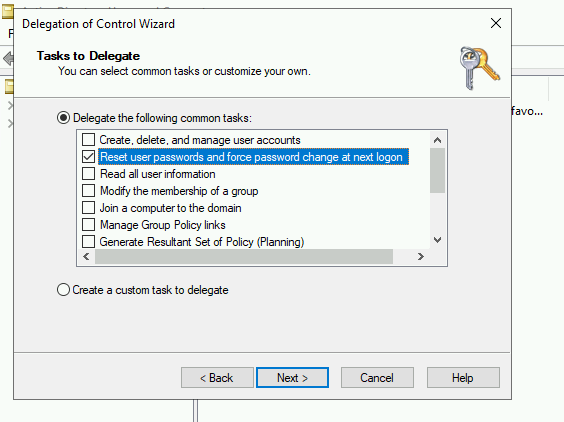---
title: Active Directory
---
## Preparation
The following placeholders will be used:
- `ad.company` is the Name of the Active Directory domain.
- `passbook.company` is the FQDN of the passbook install.
## Active Directory Setup
1. Open Active Directory Users and Computers
2. Create a user in Active Directory, matching your naming scheme

3. Give the User a password, generated using for example `pwgen 64 1`.
4. Open the Delegation of Control Wizard by right-clicking the domain.
5. Select the passbook service user you've just created.
6. Ensure the "Reset user password and force password change at next logon" Option is checked.

## passbook Setup
In passbook, create a new LDAP Source in Administration -> Sources.
Use these settings:
- Server URI: `ldap://ad.company`
For passbook to be able to write passwords back to Active Directory, make sure to use `ldaps://`
- Bind CN: `<name of your service user>@ad.company`
- Bind Password: The password you've given the user above
- Base DN: The base DN which you want passbook to sync
- Property Mappings: Select all and click the right arrow
The other settings might need to be adjusted based on the setup of your domain.
- Addition User/Group DN: Additional DN which is _prepended_ to your Base DN for user synchronization.
- Addition Group DN: Additional DN which is _prepended_ to your Base DN for group synchronization.
- User object filter: Which objects should be considered users.
- Group object filter: Which objects should be considered groups.
- User group membership field: Which user field saves the group membership
- Object uniqueness field: A user field which contains a unique Identifier
- Sync parent group: If enabled, all synchronized groups will be given this group as a parent.
After you save the source, a synchronization will start in the background. When its done, you cen see the summary on the System Tasks page.
